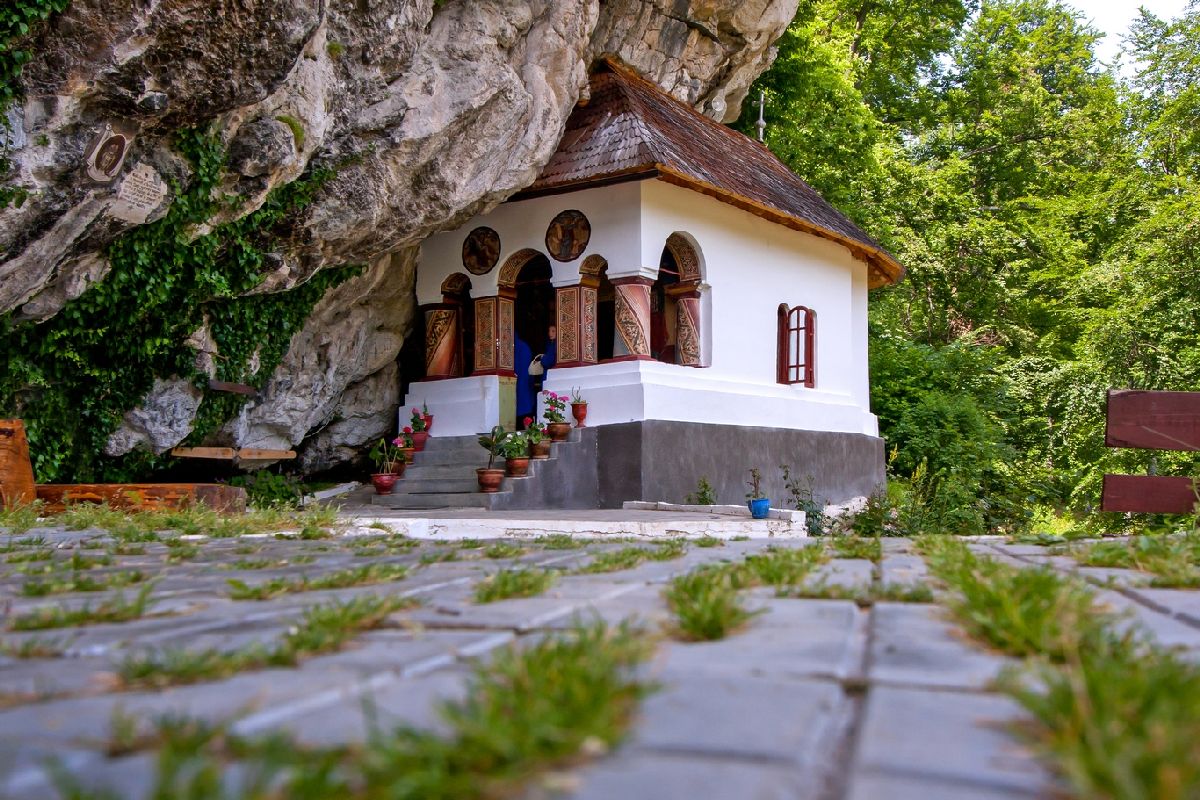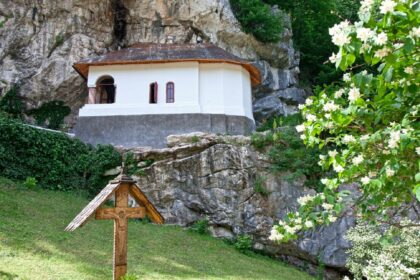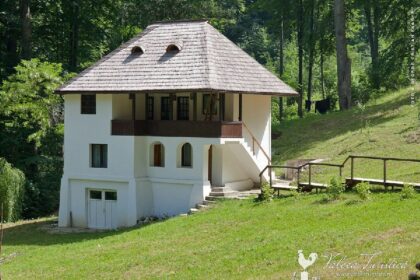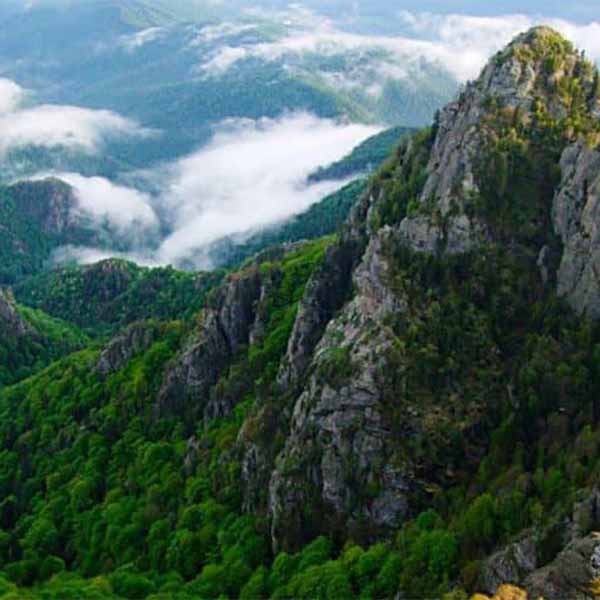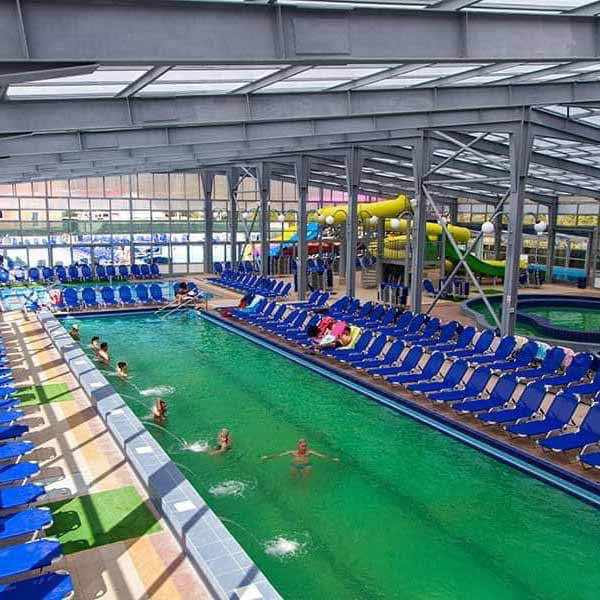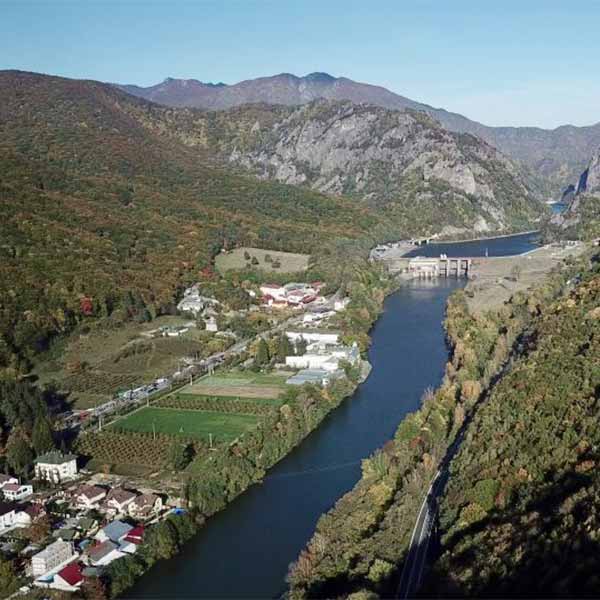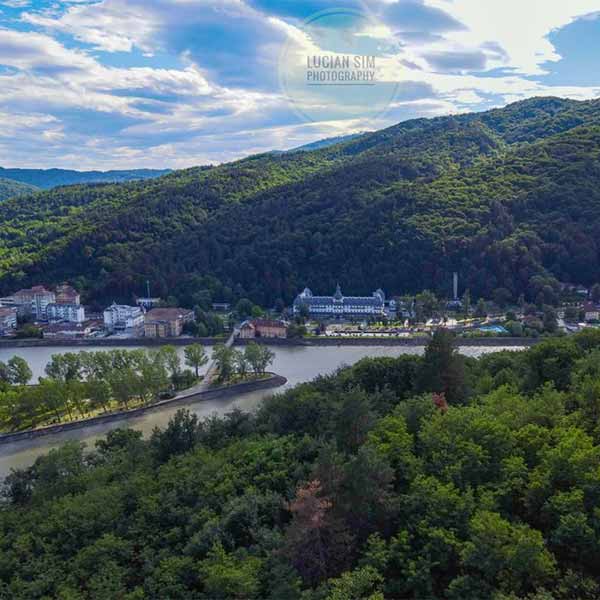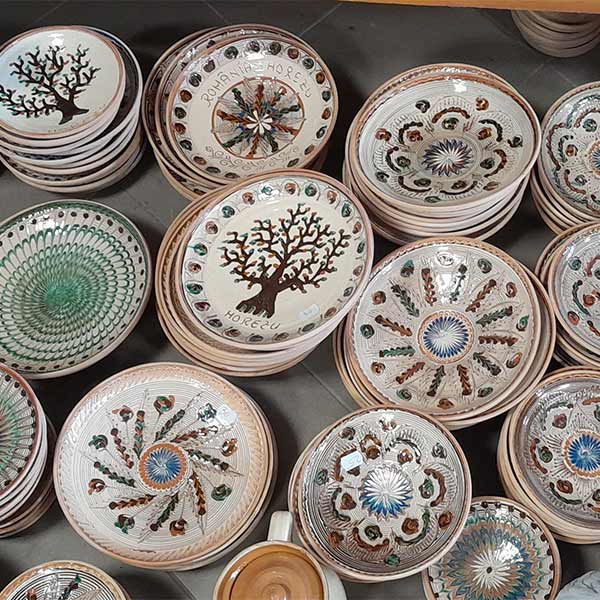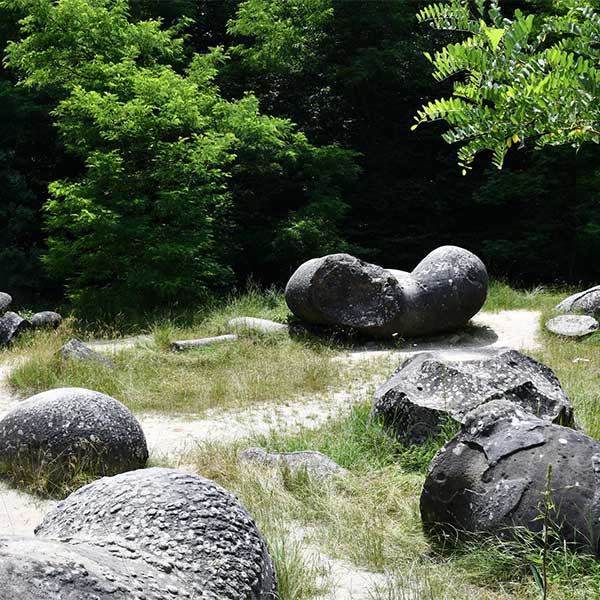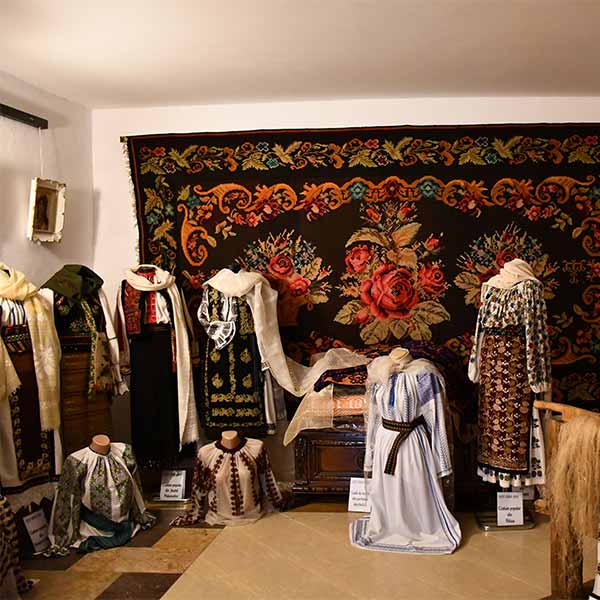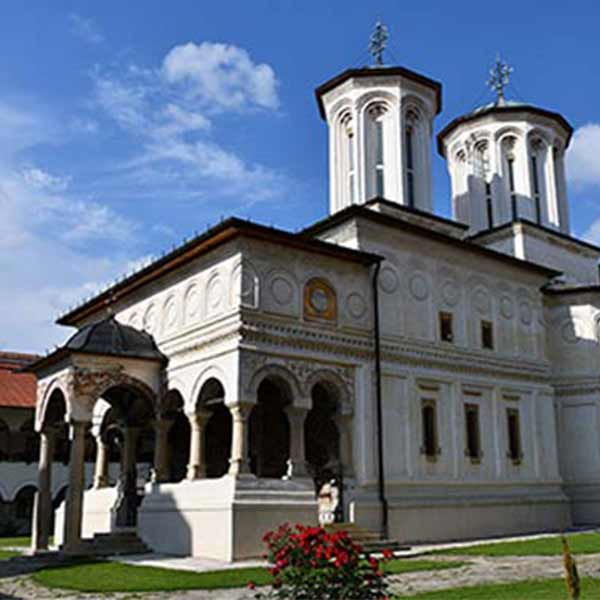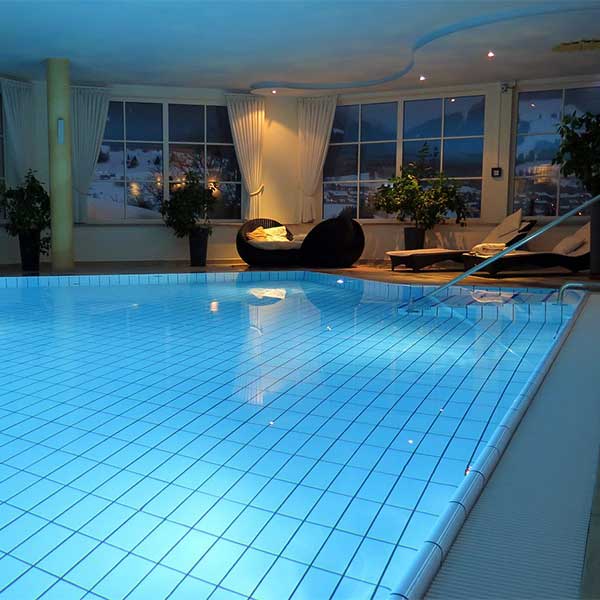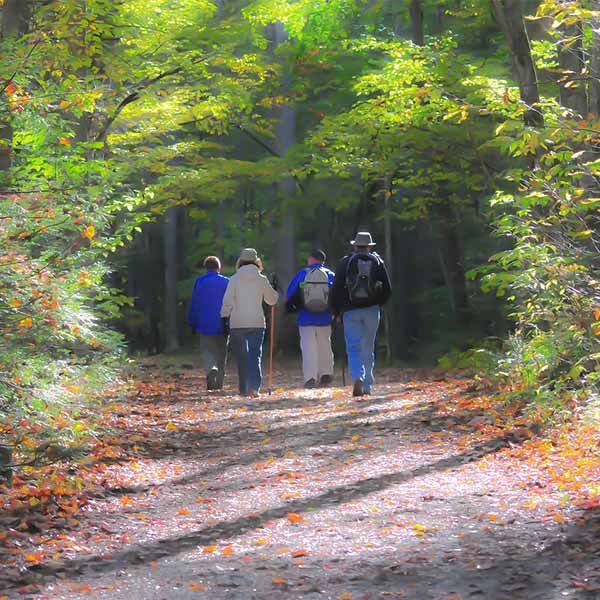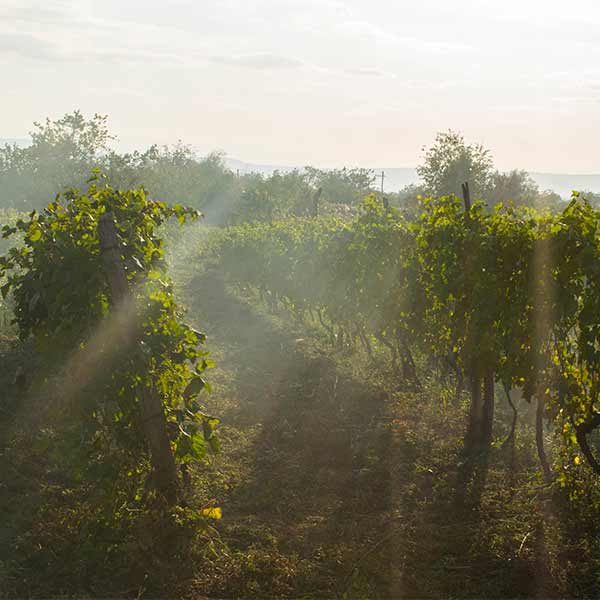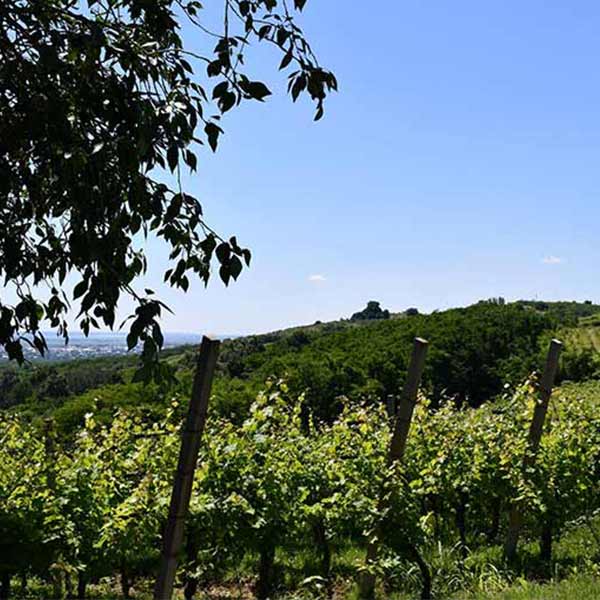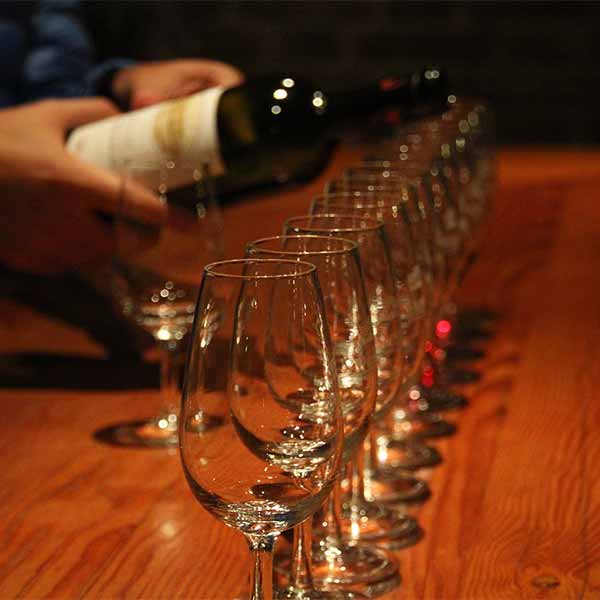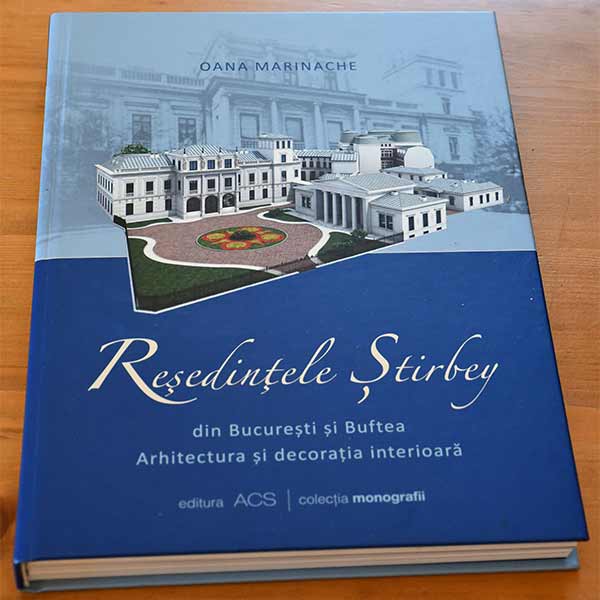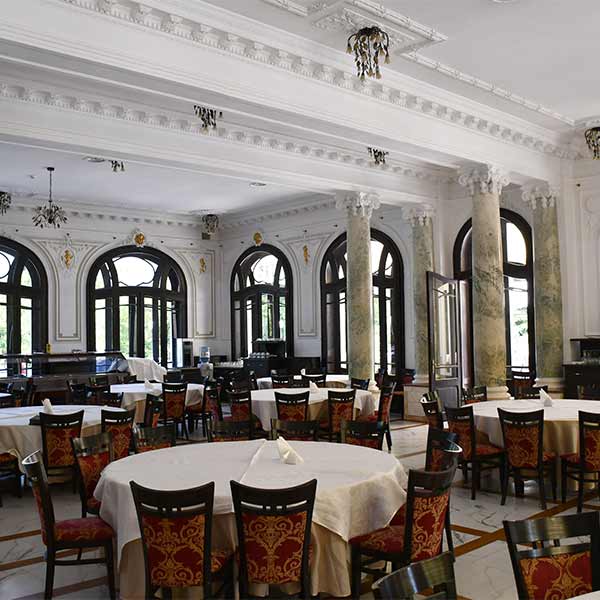
Pahomie Hermitage
Pahomie Hermitage
Schitul Pahomie is located on the territory of Baile Olanesti (Barbatesti commune), Valcea county, about 30 km from Ramnicu Valcea, under the crests of the Capatanii Mountains, access to this monastic settlement is on DN 64A, Ramnicu Valcea – Baile Olanesti, passing through Pausesti-Maglasi, turning left towards the village of Cheia, then along the Cheia Valley, on a forest road accessible by car, until the beautiful spring, which is almost 50 meters long, on which is built the church of the monastery, with the “Holy Prophet Elijah Tesviteanul”.
From the current hermitage directory, it appears that the founders are Pahomie the monk and Sava the Haiduculus, in 1520, justifying the name of the Schitul Pahomie de la Izvorul Frumos.
| Schedule: | |
|---|---|
| Monday to Sunday | 8:00 – 19:00 |
According to another story, this Pahomie would be none other than the great banker Barbu Craiovescu, founder of the Bistrita Monastery, who in 1519-1520, when he rebuilt Bistrita, demolished by the cannon of Mihnea the Bad in 1509, also built the Schitul Pahomie, in memory of the fact that at Izvorul Frumos, in the wilderness of the Buila massif, on the road he was looking for through the forest to reach Sibiu, to escape from the scourge of Mihnea, he found the salvation of his life and those who accompanied him on his wanderings. Among his friends is the captain of Sava’s sheep, who became Sava the Haiducul, because his master had been living here for a long time and often made forays through the neighbouring villages to get food.
The date of 1684 in today’s hermitage pisania is supposed to be the year in which the hermitage repair took place, in the same year the Bistrita Monastery was renovated by Constantin Brancoveanu, as a descendant of the Craiovestilor family.
From 17 December 1824, we have written data about the condition of the hermitage “Izvorul Frumos” – the metoch of the Iezer Monastery: “The church is completely in the process of being demolished”. Since 1880, the hermitage was abandoned. Only in 1952 the church was rebuilt in its original form, according to the traces of the remaining walls, with masons from Costesti and carpenters from Barbatesti, the painting being executed by Stan Hermeanu, in 1956. With time the painting deteriorated, being redone in 1997, by the hieromonk Popa Nicolae from Perisani.
The sanctification of the hermitage was done on September 30, 1956, by Bishop Joseph of Ramnic, and was entrusted to the guidance of Father Veniamin from Schitul Patrunsa.
The first inhabitant of the renovated hermitage was the monk Ioasaf Ionescu, who came from Arnota. He died in 1980 and was buried near the wall of the hermitage church. After this date, the hermitage was shepherded by the young monk Galaction Zelig, who was trained by Father Lavrentie Sovrea from Frasinei Monastery, who infused the hermitage with young people and brought it out of anonymity. Feeling tired, Father Galaction asked the Most Holy Gherasim, Father Hieromonk Ieronim Tamas, from Nicula Monastery, spiritual son of the Most Holy Bartolomeu Anania, Archbishop of Cluj, to take over the direction of the hermitage. The request is approved as of 1 January 2002.
The church, built under a large rock (on which is the image of the Lord), with a nearby waterfall of ice-cold mountain water, awaits its visitors in silence and prayer.
Thanks Vâlcea Turistica for permission to use the photos and information.
